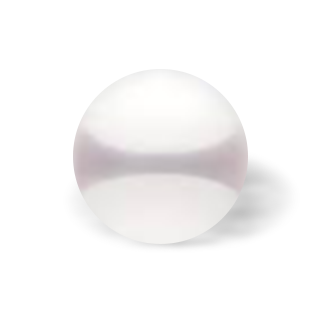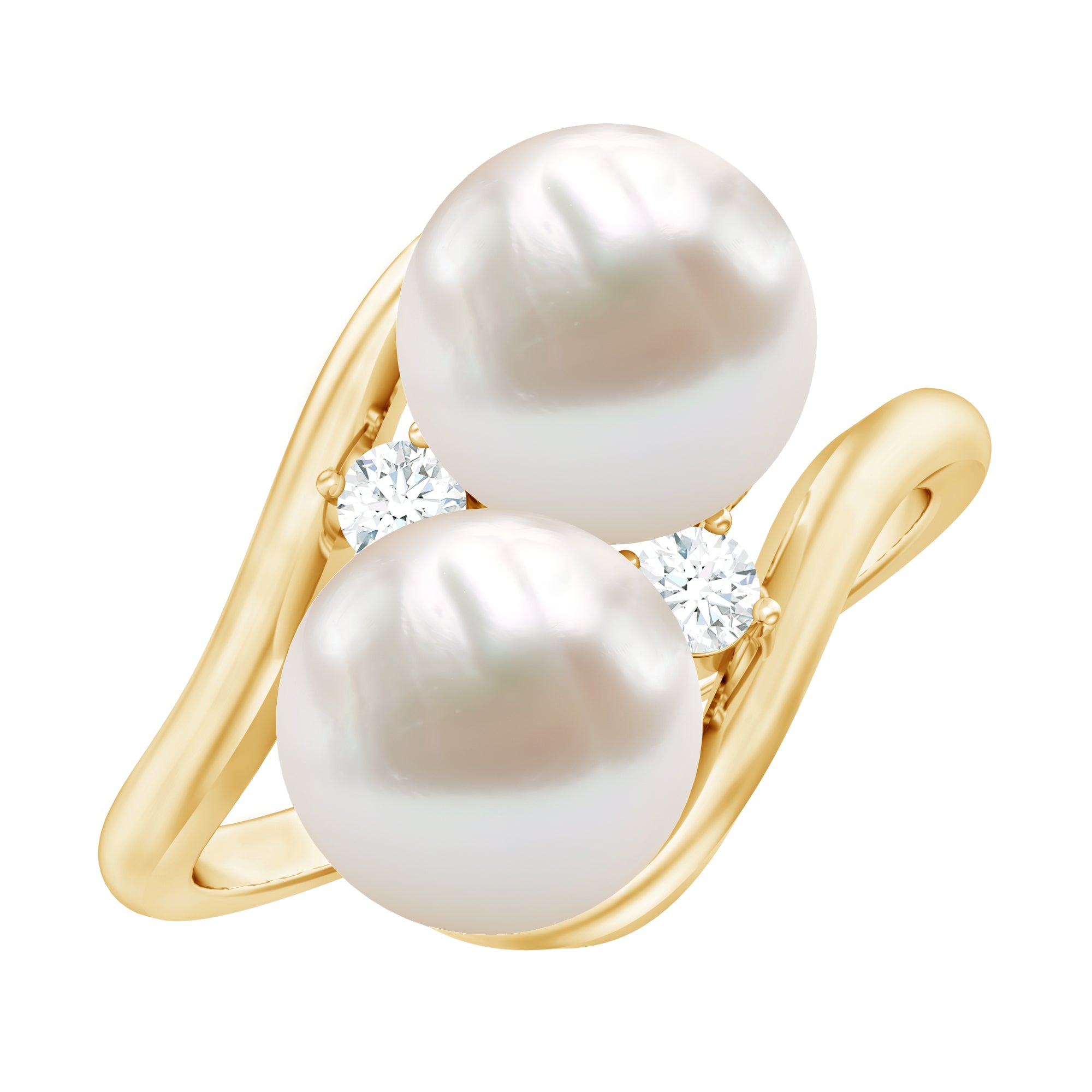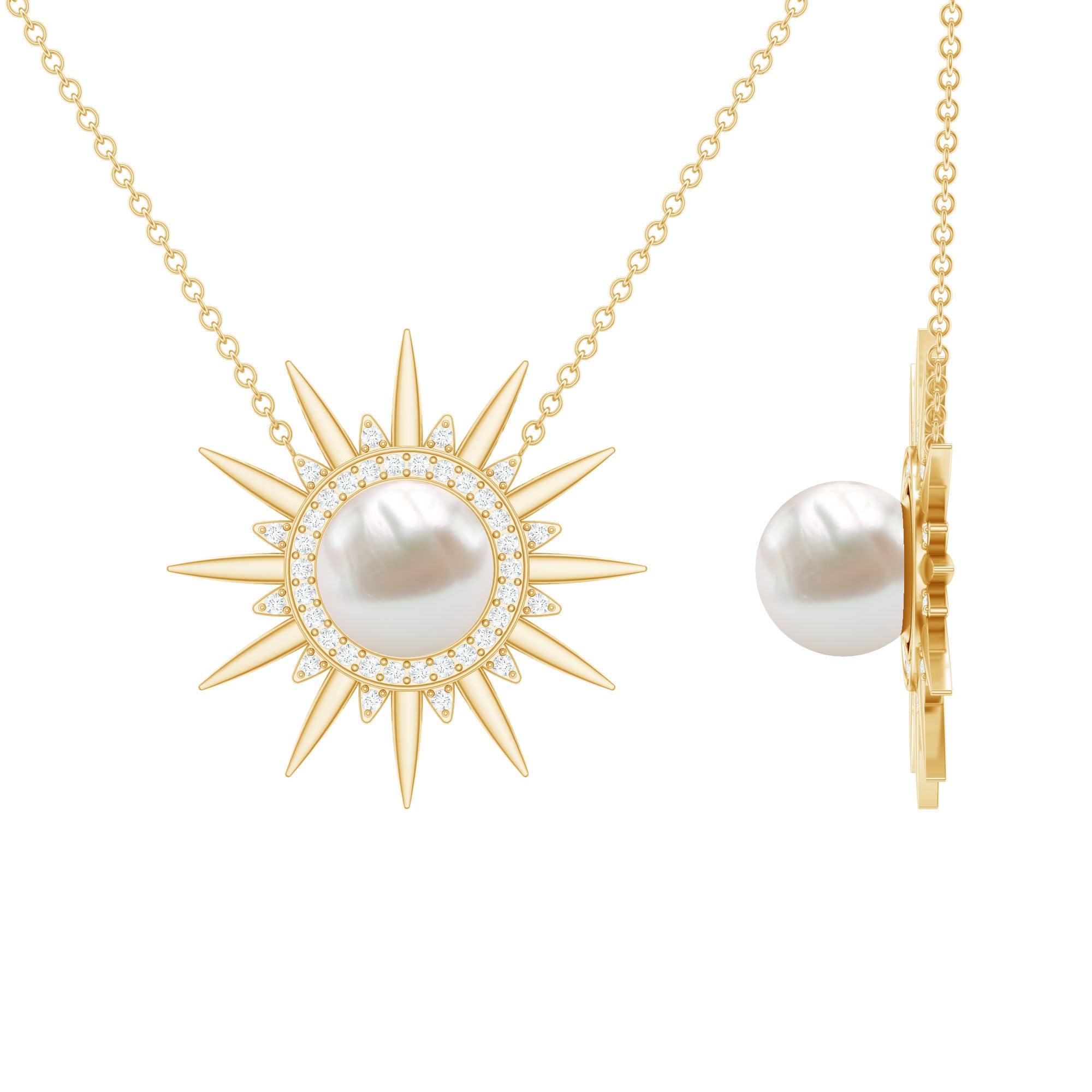All About Fresh Water Pearl: Types, Colors, Description, Origins & Details
Pearl has a piece of all of ours’ hearts and that too we don’t even know since how long! Favored by royalties and younger generations alike, Freshwater Pearl can sure mesmerize any eye with its radiant shine! Is there anyone who isn’t a fan of natural color hues already?
Freshwater Pearl, just like its name, has a fresh radiant beauty that you cannot help but adore. Yes, we know you’re all awe of its heavenly elegance. So much so that it has got you curious to known more about this gemstone. What is our Freshwater Pearl education guide here for? We address all the basic knowledge revolving around Freshwater Pearl: its meaning, history, benefits to the grading factors, properties and the determinants of its quality in order to make a prudent decision while setting out to buy Pearl Jewelry.
Properties of Fresh Water Pearl
Hardness
Having a hardness of around 2.5 to 4.5 on Moh’s scale, Freshwater Pearl requires some extra care since it is pretty delicate.
Color
The world known USP of Freshwater Pearl! With its color ranging from white, pink, silver to grey and black, Freshwater pearl looks radiant and smooth in all. Although the most common color out of the lot is white.
Luster
The luster of Freshwater Pearl, the key determinant of its brightness and radiance, and hence the quality, ranges from excellent wherein reflections are more prominent, very good wherein reflections are more bright, good wherein reflections are not that sharp, specially around the edges to fair and poor wherein reflections are not that bright or sharp.
Origin & History
The royal appearance of Freshwater pearl would’ve given you an idea of how renowned it has been since time immemorial. Cleopatra, whose love for gemstones is not unknown, drank a goblet of wine dissolved in large natural pearl in her desire to have the wealthiest meal ever. Such was the craze of Freshwater Pearl that Caesar is known to have invaded Britain in early as 55 BC. In the early 13th century, farmers in China had begun to cultivate blister pearls in freshwater mussels and enhanced them with the help of Buddha shaped moulds. Isn’t this an interesting start to Freshwater Pearl education?
Where is Fresh Water Pearl found?
Freshwater Pearl, just like its name suggests, is known to be found in rivers, lakes and ponds. It is abundantly found in China in Hyriopsis cumingi, a triangle shell and Hyriopsis schlegeli, a Biwa shell. Apart from that, it is also found in Japan in Biwa pearls and Lake Kasumigaura pearls, followed by United States in Mississpi river basin.
Fresh Water Pearl versus Salt Water Pearl

Fresh Water Pearl
The key difference lies in the formation! Freshwater pearl, is known to be cultivated and found in the mussels in lakes, ponds and rivers, just how its name suggests. They can be found in a plenty of different shapes and sizes in their natural habitat. Apart from that, they are more easily available.

Salt Water Pearl
Having a perfect luster and shine, Saltwater pearl, typically the Japanese Akoya Pearl, Tahitian Pearl and Akoya Pearl, is known to be found under oysters in sea waters, typically oceans, just how its name suggests. Its key USP that sets it apart from the other pearls is its perfect round shape, specially of the Akoya pearl. And since these are not that easy to find, they are more pricey.
Fresh Water Pearl Quality and Price Filters
Wondering how to buy Freshwater Pearl? Not sure how to judge the quality of your favorite Pearl jewelry? Happens! We’re all so mesmerized by the brilliant luster and natural sparkle of Freshwater Pearl that being well versed with its quality becomes all the more important. But worry not! We got you covered right there.
Color
The color of a pearl is actually the pearl’s body color and is available in number of hues that is black, silver, white, white rosé, gold or pink. A secondary overtone can also be seen when light is reflected off the surface of a pearl. Therefore, the pearl must be carefully examined as it may appear white at first glance but an overtone can be revealed well looked closer.
- White Fresh Water Pearl: The white color of Freshwater Pearl is usually natural and more common. The most radiant and royal out of the lot!
- Pink Fresh Water Pearl: The pink color of Freshwater pearl is also natural and carries satin like smoothness and radiance. Perfect for that feminine glow!
- Lavender Fresh Water Pearl: A lavender Freshwater Pearl is also natural, found in lakes and rivers. The most unique out of the lot!
- Black Fresh Water Pearl: To achieve that black satin like radiance, Freshwater pearl is usually heat treated. A perfect dramatic luster!
Size
The Freshwater Pearls can be measured on the basis of their Carat Weight, however, more than often, the better measuring factor for pearl can be in terms of their size in millimeters. In case of Freshwater Pearls the size can range from 3.0 - 13.0 MM.
Luster
Luster is the deep shine produced by pearls which is a combination of the exterior shine as well as the glow from within. This luster occur due to the reflection of light from the calcium carbonate crystals. Nacre’s thickness and layer arrangement in a pearl determine the luster. These factors further depend upon the pearl’s type and the time it’s allowed to grow for.
Nacre Quality
Haven’t heard of it before? Well, Pearls are made from nacre and the rule is: thicker the nacre, more the luster, more top notch the quality of Freshwater Pearl. And typically the nacre quality of Freshwater pearl is categorized as acceptable meaning the pearl has thick nacre, nucleus visible which is the dark component present in thick nacre leading to blinking and chalky pearl that is dull in luster because of its thin nacre while freshwater pearl is known to be completely nacre.
Fresh Water Pearl Grading Value
What’s more easy to judge the quality of a pearl than breaking it down and categorizing it using a grading system? Makes sense right? Having a mere glance at the Freshwater pearl grading chart can give you an idea of its quality, helping you make a better decision in buying your freshwater pearl jewelry.
AAAA (Elite)
The mere mention of elite would’ve given you an idea of how royal and sought after this June birthstone category is with only top 0.3 % of yearly pearls belonging to this category. Having an excellent luster, with very very less blemishes and a perfect round shape, the Freshwater pearl belonging to this category is like a match found in heaven.
AAA Quality
The top 1 % of yearly Freshwater Pearl belonging to this category have a high luster and blemish rate ranging less than 5 percent with little to no variation in color, tone and shape or size.valuable.
AA+ Quality
The top 5 % of yearly Freshwater Pearl harvests belongi
AA Quality
The top 10 % of yearly Freshwater pearl harvests belonging to this category have a good to fair luster along with a blemish rate ranging up to 20 percent. A less sought after than its counterparts!
A Quality
The least sought after out of the lot! The Freshwater Pearl belonging to this category have a fair to poor luster along with 50 % of blemishing and possess great variation in luster, shape and size.
Benefits of Fresh Water Pearl
Freshwater Pearl, just like its name suggests, has ties with royalty, purity and peace. A mere glance is enough to tell you that. That being said, let’s take a look at its wholesome benefits with our freshwater pearl guide:
Physical Healing
The one benefit that you cannot look past! Freshwater Pearl is known to heal the problems that affect our lungs including breathing problems, asthma, etc. In fact, it is well known to work wonders for our heart and liver as well. Basically, everything in your body that you need to be at full swing of your health.
Mental Healing
Just like its radiant appearance, this June birthstone is known to have ties with purity and peace and thus radiates positivity in the life of the wearing, blessing him with lifelong happiness. It also brings emotional stability when in stress.
Astrological Benefits
Freshwater Pearl is known to bring good fortune in the life of the wearer, specially for all those June babies and gets rid of any negative energies. It has been carrying that belief since time immemorial.
Frequently Asked Questions
How is a Freshwater Pearl formed?
In nature, all the mollusks can produce pearls when a microscopic organism gets trapped inside its shell. In response to this foreign entry the mollusk starts to deposit layers of calcium carbonate in the form of aragonite.
What is difference between cultured and natural Freshwater Pearls?
Freshwater Pearls are formed as a defense mechanism of mollusks when an irritant gets trapped inside the mollusk. In case of natural pearls, the formation takes place naturally but it is not the case with cultured pearls, which are formed with the help of human intervention when an irritant is introduced in the mollusks.
Where do Freshwater Pearls come from?
Freshwater Pearls are largely produced by China. They are also culture-grown in countries such as Indonesia, the Philippines, Australia and Myanmar.
How to take care of Freshwater Pearls Jewelry?
When it comes to Freshwater Pearl jewelry, the simple rule of thumb is to wear them last and take off first. Use of hairspray, lotion or perfume can dull the luster of the pearl. After their use, wipe them with soft tissue or cloth before putting them back. The organic gem must be kept in soft cloth bag to help them breathe.
What is a Freshwater Pearl certification?
The most common Freshwater Pearl Certifications includes from GIA, IGL and HRD labs. It is usually a document you receive on the behalf of the aforementioned 3rd party labs which describes an Freshwater Pearl in all of its characteristics.
Each and every party’s defining grounds may defer.
Can Freshwater Pearl get wet?
Well, since Freshwater Pearl has a hardness rating of 2.5 to 4.5 on Moh’s scale, it is quite prone to damages and thus it is advisable to keep it away from water. Harmful chemicals can also have a bad impact on freshwater pearl, thus make sure to remover them while in shower or pool.
What is the birthstone of Freshwater Pearl?
Freshwater Pearl is known to be the birthstone of June.
What are the shapes of Freshwater Pearl?
Freshwater Pearl is known to come in a variety of different shapes in nature including button shape, rice shape, coin shape, potato shape and stick pearls,
Conclusion
Freshwater Pearl, fresh from the rivers and lakes, has that royalty and radiance imbibed in it that you cannot help yourself from getting a hold on one. There is a reason it has always been such a favorite among royalties. And that’s why we thought why not facilitate you with a fun ride full of Freshwater Pearl education right from the history and origin to the determinants of its quality and benefits. Everything said and discussed, we hope your love for Freshwater pearl has only amplified. That being said, here we sign off wishing you all the luck in purchasing your favorite freshwater pearl jewelry with our freshwater pearl buying guide.




